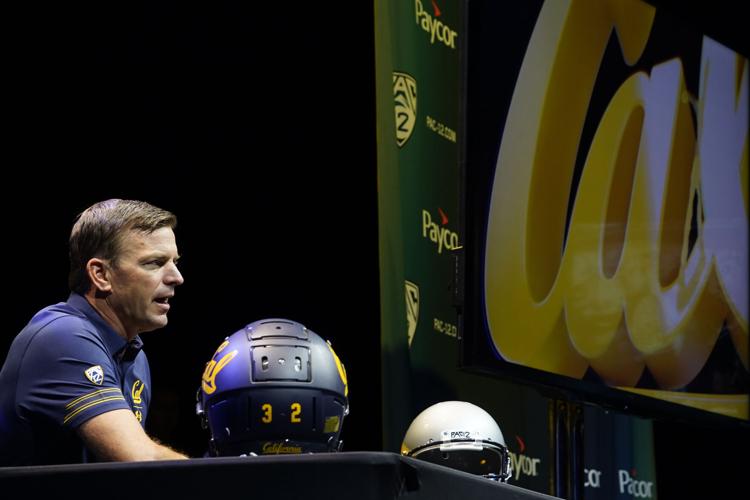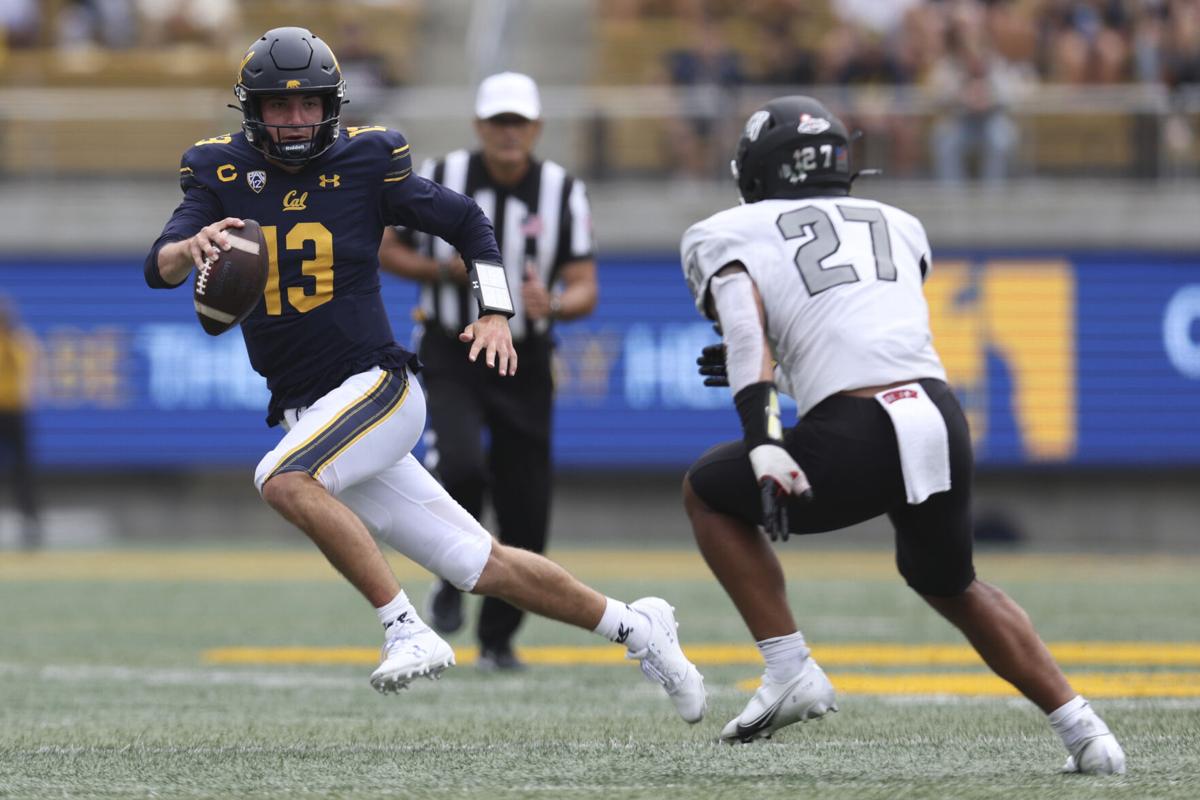Dear Mr. Football: Is it possible for Arizona to go from 1-11 to the Rose Bowl?
A: It has been done — once. In 1958, Cal was on a 1-11 slide when against all odds it won six of its last seven games to win the conference. It was the last time the Bears have been to the Rose Bowl, an 0-for-64 year streak that overwhelms Arizona’s 0-for-44 year streak.
The Golden Bears clinched the long-ago Rose Bowl berth on the same turf, Berkeley’s Memorial Stadium, that Arizona will play on Saturday afternoon. How did it happen? Cal’s previously undistinguished junior QB, Joe Kapp, emerged as a consensus All-American in those final seven games. He subsequently became a Super Bowl quarterback for the 1969 Minnesota Vikings.
Pete Elliott coached the Bears to a 1-9 record in his first season at Cal, 1957, and then opened 0-2 a year later.
How do you go from 1-11, as Arizona did under Jedd Fisch last season, to the Rose Bowl? You win close games. The ’58 Bears beat UCLA, USC, Washington and Stanford by a cumulative score of 62-51.
And you get lucky to deploy a QB-of-a-generation like Joe Kapp.
Dear Mr. Football: What Pac-12 school took advantage of Arizona’s ineffective in-state recruiting under Rich Rodriguez and Kevin Sumlin?
A: Of all teams, that would be Cal.
The Golden Bears have 12 Phoenix-area players on their roster, including nine on this week’s two-deep depth chart.
Their starting outside linebacker is Odua Isibor of Phoenix St. Mary’s. Starting right tackle Brayden Rohme is from Gilbert Perry High School. Their Nos. 1-2 quarterbacks are Jack Plummer of Gilbert High School and Kai Milner of Gilbert Higley High School and so on all the way down to their starting long-snapper, Slater Zellers, of Scottsdale Notre Dame Prep.
Not only has Cal out-recruited Arizona in Phoenix, it has also dominated ASU in Phoenix the last five years. The last time ASU signed one of the many blue-chip in-state prospects (a four- or five-star recruit) was 2017.
One thing that doesn’t figure is that Plummer, a transfer from Purdue, played for a losing Gilbert High team, going 1-9 as a junior and 4-6 as a senior. A three-star prospect, Plummer turned down offers from Arizona, Cincinnati and Oregon State to play for the Boilermakers.
Plummer has never been a full-time starter until this year at Cal. He is not an NFL prospect, but he completed 65% of his passes at Purdue for 26 touchdowns against just 10 interceptions.
Arizona will face more feared QBs this year against USC, UCLA, Utah, Oregon, Washington and Washington State. Translation: Beating the Golden Bears is one of Arizona’s best opportunities to win a conference game and move toward bowl eligibility.
Dear Mr. Football: Has Arizona ever engaged in a more sensitive brother vs. brother showdown than presented by Saturday’s Jake Plummer vs. Arizona backup QB Will Plummer matchup?
A: You might’ve guessed Amphitheater’s Bates brothers — the UA’s Michael Bates and ASU’s Mario Bates — would’ve been No. 1. But Michael Bates left the Wildcats in 1990, a year before Mario became eligible at ASU in 1991. Between them, the Bates brothers played 18 NFL seasons.
The clear winner of the brother-vs.-brother showdown happened from 1981-84, when ASU All-American kicker Luis Zendejas was matched against Arizona’s best-ever kicker, Max Zendejas.
The clear winner? Arizona. Max was perhaps the most important player on the field in 1983 and 1984; his last-second 47-yard field goal beat the favored Sun Devils 17-15 in 1983; and his three long field goals beat Luis’ Sun Devils in a tense 16-10 game at Arizona Stadium a year later.
Dear Mr. Football: Is it true Cal coach Justin Wilcox twice turned down offers to be the head coach at Oregon — his alma mater — last December?
A: Cal athletic director Jim Knowlton confirmed such and added that Washington pursued Wilcox to be its head coach last winter.
The last time a Pac-12 coach turned down a clearly better head coaching opportunity was when Arizona’s Dick Tomey declined an opportunity to be Oklahoma’s head coach in December 1994. Tomey, coming off 10-2 and 8-4 seasons in which Arizona was ranked in the Top 10 both seasons, told me he was honored OU pursued him, but ultimately recommended they hire Arizona defensive coordinator Larry MacDuff.
The Sooners instead hired Miami coach Howard Schnellenberger, who went 6-6 and was fired after one season.

Justin Wilcox, an Oregon native, turned down a chance to run the Ducks.
Dear Mr. Football: Is that a misprint? Justin Wilcox declined a chance to be Oregon’s head coach? Really?
A: What makes it more difficult to believe is that Wilcox was a standout linebacker for the Ducks in the late 1990s and his father, Dave Wilcox, was an All-Pac-8 lineman for the Ducks in the mid-1960s.
Moreover, Wilcox grew up in Junction City, Oregon, about 15 miles from the UO’s Autzen Stadium.
That’s what made Wilcox’s decision to remain at Cal so stunning. The Ducks have superior budget, facilities, history and a brand that Cal’s football program can’t touch. Plus, the Ducks are the No. 1 sports program in the state of Oregon, while the Bears football team is dwarfed in the Bay Area by the Warriors, 49ers and Giants.
In Oregon, you can drive from your home to the office in 10 minutes. In Berkeley, you live on the freeways. The quality of life in Eugene, Oregon, is superior to that of traffic-clogged Berkeley. Wilcox’s decision to stay at Cal is baffling. As average as Arizona’s football program has been since it joined the Pac-12, the Wildcats are 160-180-6 in conference games; Cal is far back at 138-221-5.
Knowlton told SI.com that part of the reason Wilcox stayed in Berkeley was that he felt he had been a big part of Cal’s recent gains as a football program.
“Together, we solved some age-old problems that have really plagued us,” said Knowlton.
And it doesn’t appear Wilcox did it for the money. His contract was extended two years through 2027, but Oregon is paying its coach, Dan Lanning, more than Wilcox will make at Cal.
Overall, it’s refreshing to see a 21st century coach choose loyalty to his team and assistant coaches over big money and a bigger splash.
Dear Mr. Football: What is most predictable about today’s Cal-Arizona game?
A: There will be tens of thousands of empty seats.
Arizona has played 17 games at Cal’s Memorial Stadium since joining the conference in 1978, and none have sold been close to a sellout. Average attendance in those 17 games is 39,412.
Capacity at Memorial Stadium was reduced from about 75,000 to 63,000 a few years ago, which means that the average UA-Cal attendance in Berkeley has been roughly 45% capacity. The largest UA-Cal crowd was 56,021 in 2007 when ex-Bears coach Jeff Tedford was toward the end of a successful eight-year run.
This isn’t a must-see rivalry. The Bears and Wildcats have sold out just one game in Tucson since 1978, and that was in 1994.
But Saturday’s game is compelling because it appears to match two programs on the rise, moving toward the middle of the Pac-12, each much improved over the last decade, a period in which each school had a 1-11 season.
Cal doesn’t have much of a home-field advantage, but it’s enough to make a difference this time.
Golden Bears 26, Wildcats 24






